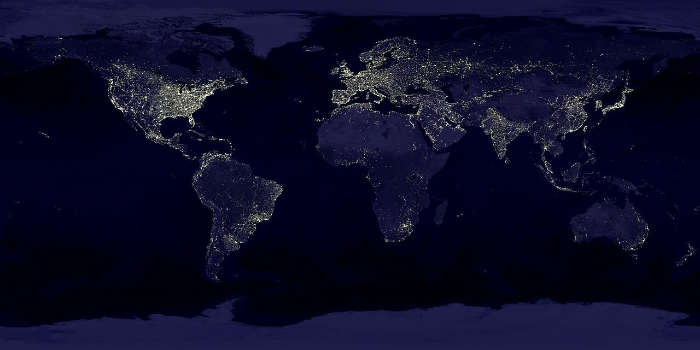Human Development Index (HDI) by Country 2025

0.4
0.5
0.6
0.7
0.8
0.9
1
Country | Human Development Index 2023↓ | Current HDI Tier | |
|---|---|---|---|
| Iceland | 0.972 | Very High | |
| Switzerland | 0.970 | Very High | |
| Norway | 0.970 | Very High | |
| Denmark | 0.962 | Very High | |
| Germany | 0.959 | Very High | |
| Sweden | 0.959 | Very High | |
| Australia | 0.958 | Very High | |
| Netherlands | 0.955 | Very High | |
| Hong Kong | 0.955 | Very High | |
| Belgium | 0.951 | Very High | |
| Ireland | 0.949 | Very High | |
| Finland | 0.948 | Very High | |
| United Kingdom | 0.946 | Very High | |
| Singapore | 0.946 | Very High | |
| United Arab Emirates | 0.940 | Very High | |
| Canada | 0.939 | Very High | |
| United States | 0.938 | Very High | |
| New Zealand | 0.938 | Very High | |
| Liechtenstein | 0.938 | Very High | |
| South Korea | 0.937 | Very High | |
| Slovenia | 0.931 | Very High | |
| Austria | 0.930 | Very High | |
| Japan | 0.925 | Very High | |
| Malta | 0.924 | Very High | |
| Luxembourg | 0.922 | Very High | |
| France | 0.920 | Very High | |
| Israel | 0.919 | Very High | |
| Spain | 0.918 | Very High | |
| Italy | 0.915 | Very High | |
| Czechia | 0.915 | Very High | |
| San Marino | 0.915 | Very High | |
| Cyprus | 0.913 | Very High | |
| Andorra | 0.913 | Very High | |
| Greece | 0.908 | Very High | |
| Poland | 0.906 | Very High | |
| Estonia | 0.905 | Very High | |
| Saudi Arabia | 0.900 | Very High | |
| Bahrain | 0.899 | Very High | |
| Lithuania | 0.895 | Very High | |
| Portugal | 0.890 | Very High | |
| Croatia | 0.889 | Very High | |
| Latvia | 0.889 | Very High | |
| Qatar | 0.886 | Very High | |
| Slovakia | 0.880 | Very High | |
| Chile | 0.878 | Very High | |
| Hungary | 0.870 | Very High | |
| Argentina | 0.865 | Very High | |
| Uruguay | 0.862 | Very High | |
| Montenegro | 0.862 | Very High | |
| Oman | 0.858 | Very High | |
| Turkey | 0.853 | Very High | |
| Kuwait | 0.852 | Very High | |
| Antigua and Barbuda | 0.851 | Very High | |
| Seychelles | 0.848 | Very High | |
| Romania | 0.845 | Very High | |
| Bulgaria | 0.845 | Very High | |
| Georgia | 0.844 | Very High | |
| Saint Kitts and Nevis | 0.840 | Very High | |
| Panama | 0.839 | Very High | |
| Kazakhstan | 0.837 | Very High | |
| Brunei | 0.837 | Very High | |
| Serbia | 0.833 | Very High | |
| Costa Rica | 0.833 | Very High | |
| Russia | 0.832 | Very High | |
| Belarus | 0.824 | Very High | |
| Bahamas | 0.820 | Very High | |
| Malaysia | 0.819 | Very High | |
| North Macedonia | 0.815 | Very High | |
| Armenia | 0.811 | Very High | |
| Barbados | 0.811 | Very High | |
| Albania | 0.810 | Very High | |
| Trinidad and Tobago | 0.807 | Very High | |
| Mauritius | 0.806 | Very High | |
| Bosnia and Herzegovina | 0.804 | Very High | |
| Iran | 0.799 | High | |
| Thailand | 0.798 | High | |
| Saint Vincent and the Grenadines | 0.798 | High | |
| China | 0.797 | High | |
| Peru | 0.794 | High | |
| Grenada | 0.791 | High | |
| Mexico | 0.789 | High | |
| Azerbaijan | 0.789 | High | |
| Colombia | 0.788 | High | |
| Brazil | 0.786 | High | |
| Palau | 0.786 | High | |
| Moldova | 0.785 | High | |
| Ukraine | 0.779 | High | |
| Ecuador | 0.777 | High | |
| Sri Lanka | 0.776 | High | |
| Dominican Republic | 0.776 | High | |
| Guyana | 0.776 | High | |
| Tonga | 0.769 | High | |
| Vietnam | 0.766 | High | |
| Maldives | 0.766 | High | |
| Turkmenistan | 0.764 | High | |
| Algeria | 0.763 | High | |
| Cuba | 0.762 | High | |
| Dominica | 0.761 | High | |
| Paraguay | 0.756 | High | |
| Egypt | 0.754 | High | |
| Jordan | 0.754 | High | |
| Lebanon | 0.752 | High | |
| Saint Lucia | 0.748 | High | |
| Mongolia | 0.747 | High | |
| Tunisia | 0.746 | High | |
| South Africa | 0.741 | High | |
| Uzbekistan | 0.740 | High | |
| Bolivia | 0.733 | High | |
| Gabon | 0.733 | High | |
| Marshall Islands | 0.733 | High | |
| Botswana | 0.731 | High | |
| Fiji | 0.731 | High | |
| Indonesia | 0.728 | High | |
| Suriname | 0.722 | High | |
| Libya | 0.721 | High | |
| Belize | 0.721 | High | |
| Philippines | 0.720 | High | |
| Kyrgyzstan | 0.720 | High | |
| Jamaica | 0.720 | High | |
| Morocco | 0.710 | High | |
| Venezuela | 0.709 | High | |
| Samoa | 0.708 | High | |
| Nicaragua | 0.706 | High | |
| Nauru | 0.703 | High | |
| Bhutan | 0.698 | Medium | |
| Iraq | 0.695 | Medium | |
| Eswatini | 0.695 | Medium | |
| Tajikistan | 0.691 | Medium | |
| Tuvalu | 0.689 | Medium | |
| India | 0.685 | Medium | |
| Bangladesh | 0.685 | Medium | |
| El Salvador | 0.678 | Medium | |
| Palestine | 0.674 | Medium | |
| Equatorial Guinea | 0.674 | Medium | |
| Cape Verde | 0.668 | Medium | |
| Namibia | 0.665 | Medium | |
| Guatemala | 0.662 | Medium | |
| Republic of the Congo | 0.649 | Medium | |
| Honduras | 0.645 | Medium | |
| Kiribati | 0.644 | Medium | |
| Sao Tome and Principe | 0.637 | Medium | |
| Timor-Leste | 0.634 | Medium | |
| Kenya | 0.628 | Medium | |
| Ghana | 0.628 | Medium | |
| Nepal | 0.622 | Medium | |
| Vanuatu | 0.621 | Medium | |
| Laos | 0.617 | Medium | |
| Angola | 0.616 | Medium | |
| Micronesia | 0.615 | Medium | |
| Myanmar | 0.609 | Medium | |
| Cambodia | 0.606 | Medium | |
| Comoros | 0.603 | Medium | |
| Zimbabwe | 0.598 | Medium | |
| Zambia | 0.595 | Medium | |
| Cameroon | 0.588 | Medium | |
| Solomon Islands | 0.584 | Medium | |
| Uganda | 0.582 | Medium | |
| Ivory Coast | 0.582 | Medium | |
| Rwanda | 0.578 | Medium | |
| Papua New Guinea | 0.576 | Medium | |
| Togo | 0.571 | Medium | |
| Syria | 0.564 | Medium | |
| Mauritania | 0.563 | Medium | |
| Nigeria | 0.560 | Medium | |
| Tanzania | 0.555 | Medium | |
| Haiti | 0.554 | Medium | |
| Lesotho | 0.550 | Medium | |
| Pakistan | 0.544 | Low | |
| Senegal | 0.530 | Low | |
| Gambia | 0.524 | Low | |
| DR Congo | 0.522 | Low | |
| Malawi | 0.517 | Low | |
| Benin | 0.515 | Low | |
| Guinea-Bissau | 0.514 | Low | |
| Djibouti | 0.513 | Low | |
| Sudan | 0.511 | Low | |
| Liberia | 0.510 | Low | |
| Eritrea | 0.503 | Low | |
| Guinea | 0.500 | Low | |
| Ethiopia | 0.497 | Low | |
| Afghanistan | 0.496 | Low | |
| Mozambique | 0.493 | Low | |
| Madagascar | 0.487 | Low | |
| Yemen | 0.470 | Low | |
| Sierra Leone | 0.467 | Low | |
| Burkina Faso | 0.459 | Low | |
| Burundi | 0.439 | Low | |
| Niger | 0.419 | Low | |
| Mali | 0.419 | Low | |
| Chad | 0.416 | Low | |
| Central African Republic | 0.414 | Low | |
| Somalia | 0.404 | Low | |
| South Sudan | 0.388 | Low |
Snapshot
-
The HDI measures countries' achievements in health, education, and standard of living, showing a global upward trend but recent declines due to COVID-19.
-
Countries with high HDI scores, like Switzerland and Norway, exhibit stable governments, quality education and healthcare, and strong economies.
-
Least-developed countries, with low HDI scores, face challenges like unstable governments, poverty, and lack of healthcare and education.
The Human Development Index, or HDI, is a metric compiled by the United Nations Development Programme and used to quantify a country’s “average achievement in three basic dimensions of human development: a long and healthy life, knowledge, and a decent standard of living.” The HDI was first launched in 1990 and has been released annually ever since, with the exceptions of 2012 and 2020/21. While HDI tends to trend upward globally over time, more than 90% of the 191 countries analyzed for the 2021/22 HDI report suffered a decline in overall HDI in either 2020 or 2021. These declines were largely attributed to the COVID-19 pandemic and its lingering effects.
A country’s Human Development Index value is determined by aggregating the country’s scores in a vast assortment of indicators including life expectancy, literacy rate, rural populations’ access to electricity, GDP per capita, exports and imports, homicide rate, multidimensional poverty index, income inequality, internet availability, and many more. These indicators are compiled into a single number between 0 and 1.0, with 1.0 being the highest possible human development. HDI is divided into four tiers: very high human development (0.8-1.0), high human development (0.7-0.79), medium human development (0.55-.70), and low human development (below 0.55).
Countries with the Highest Human Development Index (HDI)
Most developed countries have an HDI score of 0.8 or above, landing them in the very high human development tier. These countries have stable governments, widespread affordable education and healthcare, high life expectancies and quality of life, and growing, powerful economies.
In contrast to this are the world’s least-developed countries (LDCs), which tend to have HDI scores below 0.55, in the “low human development” category. LDCs face unstable governments, widespread poverty, lack of access to healthcare, and poor education. Additionally, these countries have low income and low life expectancies, coupled with high birth rates. This illustrates the fundamental purpose of the HDI: to help the United Nations determine which countries (especially which least-developed countries) are most in need of assistance.
Emerging concerns in the Human Development Index 2021/22
The 2021/22 version of the HDI report outlined what it called an emerging “new uncertainty complex”, in which three rising factors – widespread and intensifying politcal and societal polarization, dangerous planetary climate change, and sweeping societal industrial transformation (such as increasing automation) – were generating new and unpredictable types of uncertainty. The report offers the COVID-19 pandemic and the 2022 war in Ukraine as example manifestations of this new uncertainty complex.
























